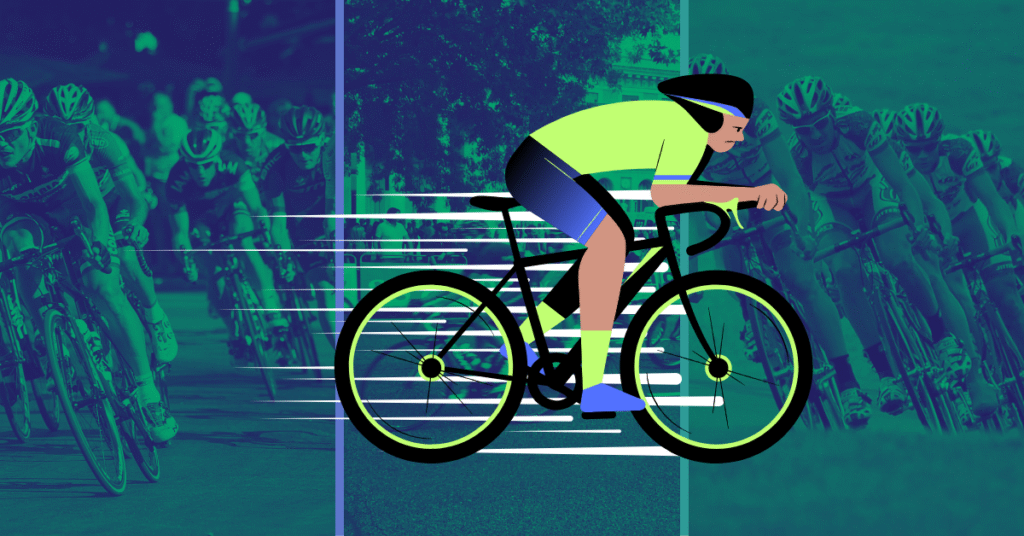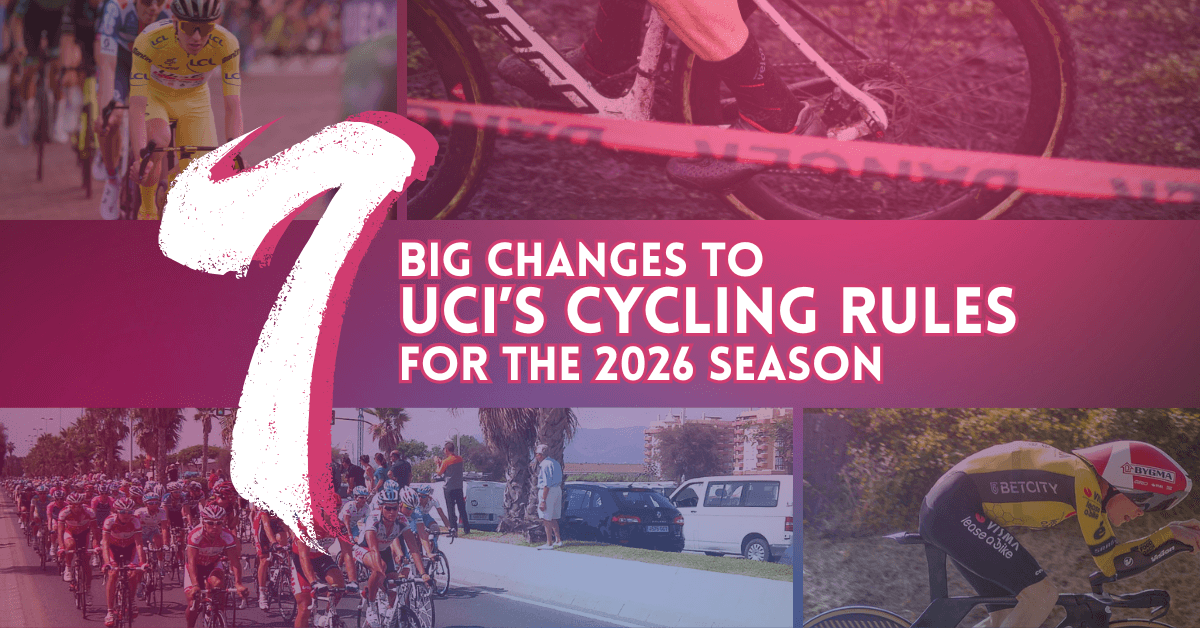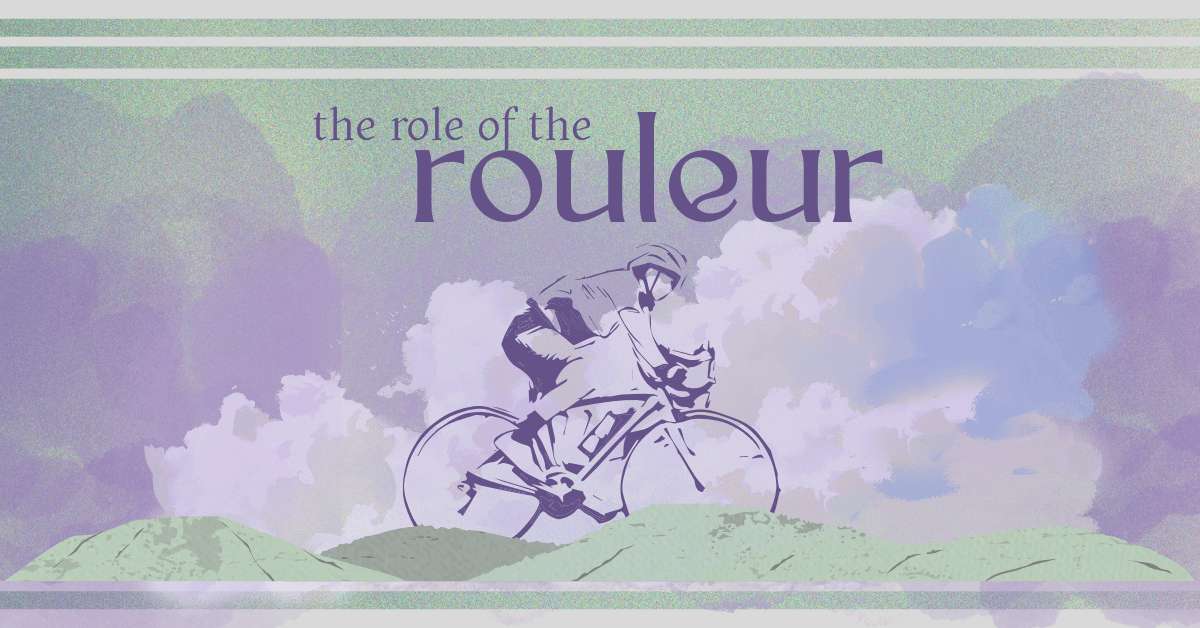A deep dive into the increasing versatility within the modern pro-peloton.

In the world of road cycling, some riders are known to stick to one specialism – as a sprinter, ‘pure’ climber, General Classification (also known as GC) rider, puncheur, time trial specialist, or rouleur – and focus solely on reaching their top level in that discipline. There are also riders that are naturally more versatile, who can climb, sprint, time trial and perform well in the classics, and who regularly ride a wide range of races throughout the season. However, in recent years, we’ve also seen some riders, who would usually fit into one category, actively trying to adapt in order to improve in other areas, and effectively train themselves into becoming more versatile.
In this article we’ll explore the reasons for this – including changing race routes, the desire for a diverse palmarès, and the general increase in the level of racing – discuss the factors that influence their likelihood of success, and ultimately, share thoughts on whether it’s something all riders should be looking to try, and why.
Read more: Jack of All Trades, or Master of One?
Embed from Getty ImagesChanging race routes.
Some riders are attempting to become more versatile in line with changing race routes. The fact that in recent years, certain race organisers have been making changes to their routes which go so far as to affect the very type of riders that they will suit, means that riders still wishing to win those races must alter their preparation and develop their physical qualities in line with the race’s demands.
★ Strade Bianche
Strade Bianche is one of the most anticipated and well-known of the spring classics, but, as a much newer race, unlike the likes of Milano-Sanremo, Paris-Roubaix and Liège-Bastogne-Liège, it is not a Monument. Over time, however, the organisers have been changing the men’s route to make it harder and more technical, with many believing that this has been done in a bid to align it with the length and difficulty level of those others, and thereby gain Monument status.
This plan has seemingly reached its culmination this year – whilst the race has traditionally taken place over around 180 kilometres, this year, the organisers added an extra 30 kilometres, taking the total distance to over 200 kilometres, and two extra climbs (with the route now taking the riders up both Colle Pinzuto and Le Tolfe twice). Suddenly, where before the race suited puncheurs like Wout van Aert, Mathieu van der Poel and Julian Alaphilippe, it now seems to favour the climbers.
In this situation, those wanting to win the race have two choices: adjust their training and try to improve their climbing in order to try to remain competitive, or abstain from racing it until the route changes once again. This year, both Van der Poel and Van Aert chose the latter, and even the riders who still decided to race, such as Gianni Vermeersch, openly commented on its changed nature and how it requires them to adjust their ambitions and preparation.
Embed from Getty Images★ Tour de France
The Tour de France has also changed its route over time, but to the detriment of the sprinters. Whilst the Tour used to be rather sprinter-friendly – giving the sprinters ample opportunity to win stages and compete for the green ‘points’ jersey on cycling’s biggest stage – over time, the number of completely flat stages has been reduced. Just last year, the Race Director, Thierry Gouvenou, even stated that they would be reducing the number of sprint stages even further in the future, after there was no breakaway formation and the peloton chose to ride most of the way at a pace more suited to a recovery ride in some of the sprint stages. Therefore, to make the race ‘more entertaining’, and ensure that there’s an exciting stage every day to keep up the viewing numbers, the Tour will be heading away from sprint stages, and in the direction of hillier and more technical stages, where racing throughout the stage may be more dynamic and nerve-wracking.
We can see this being implemented in this year’s route – whilst there are two potential sprint stages in the first four days, both stages still feature some not-insignificant hilly climbs, and there are only a few stages which could properly be described as ‘pancake flat’. This means that there will increasingly be fewer opportunities for the sprinters to win and thereby gather points for the points classification, with the puncheurs now having more of a look-in. In this situation, to make the most of their opportunities, the sprinters will need to improve their versatility when it comes to being able to keep up over the hills and win in different conditions.
Riders wishing to expand their palmarès.
Another reason why some riders have made attempts to become more versatile, is their desire to win different races and expand their palmarès, putting them in a better position to be able to break records and making them more valuable on the transfer market.
Embed from Getty Images★ Jasper Philipsen
Philipsen is a great example of a rider that has worked on his versatility in recent years, and has had a decent amount of success. It’s a common trajectory for sprinters to evolve into classics riders as their physical qualities change over time and they lose some of their top-end speed and explosivity as they age, however not all are successful. But Philipsen has been, showing last year that he can perform in classics races at the highest level by winning a Monument: Milano-Sanremo. Admittedly, Milano-Sanremo is a race traditionally known as the ‘sprinter’s classic’, but he has backed up that result and proven that he can ride well in hillier and more technical classics races too with his performances at Paris-Roubaix, finishing second behind his teammate two years in a row. He has also won a number of other one-day races in the last few years, including the Classic Brugge-De Panne twice in a row, and Kuurne-Brussel-Kuurne, as well as placing third in Omloop Nieuwsblad this year.
His increasing versatility and ability to succeed outside of sprinting, has allowed him to win in more races all year round (rather than just in sprint stages in stage races), and thereby build his palmarès further and increase his ‘value’.
Embed from Getty Images★ Mads Pedersen
Pedersen has also followed a similar trajectory. Once viewed as more of a sprinter, mainly winning sprint stages in stage races, and some of the more ‘sprinter-friendly’ one-day races, he has progressed into a strong classics rider that now regularly performs better in hilly races than in flat sprints. This has allowed him to win a wide range of races, from stages in Grand Tours, to classics races like Gent-Wevelgem, and even the GC of less mountainous races, like the Tour of Denmark and Lidl Deutschland Tour. He’s openly expressed that his ultimate aim is to win Paris-Roubaix, and over the past few years has been training hard in order to realise that goal.
Whilst he hasn’t yet succeeded, this year’s spring classics season has shown just how much progress he’s made, with him winning Gent-Wevelgem again, placing second in the E3 Saxo Classic and Ronde van Vlaanderen, and achieving another impressive third place at Paris-Roubaix, thereby demonstrating his consistency as a classics rider and indicating just how close he is to that all-important win.
Embed from Getty Images★ Lotte Kopecky
Kopecky has also expressed a desire to diversify her palmarès. She’s already incredibly versatile, excelling in the spring classics, the individual time trial (as the current European champion), and in the GC of punchier stage races, however, she has also been very open about her ultimate ambition to win the biggest race of them all: the Tour de France Femmes.
In order to do this, she still has some way to go, and the main obstacle will be improving her climbing skills. She already began doing this last year, and saw positive results almost immediately, winning the 2024 World Championships Road Race on a course expected to be more suited towards the climbers, and putting in multiple impressive climbing performances in order to win the Tour de Romandie ahead of Demi Vollering last year, despite not winning a single stage. However, the Tour de France Femmes is a totally different beast that is only getting harder – this year she’ll have to go up against the likes of Vollering on four mountainous stages, and maintain top performance over 9 days. Whilst not impossible, this will require her to push the boundaries of her natural physical qualities to the limit, and it remains to be seen whether it can be done.
Read more: Remember last year’s Tour de France Femmes with our 2024 preview article, Why We Love the Tour de France Femmes
Embed from Getty Images★ Mathieu van der Poel
One rider that has found that there absolutely are limits to just how much one can improve their versatility, is Van der Poel. Last year – despite usually being known as a classics specialist that only really rides the races that suit him – he openly discussed having a new goal of becoming more versatile and improving his climbing. This was in an attempt to win Liège-Bastogne-Liège, a race he has never come close to winning before, and thereby add to his ever-increasing Monument count. Despite failing to win the race, he managed to just about snatch third place in the bunch sprint behind the two riders out in front, which seemingly gave him some confidence to continue with this challenge, and work towards defending his World Championship title on the climber’s parcours in Zurich and racing Il Lombardia to see if he could add that Monument to his palmarès too. However, in Zurich, he was once again unable to follow the best on the climbs, and had to ‘settle’ for another third place. Following this, he decided not to race Il Lombardia, and has seemingly since relinquished all hopes of being able to win ‘climber’s races’ – this year deciding not to race any of the Ardennes classics, nor the mountainous World Championship Road Race in Kigali.
This shows that being versatile isn’t as easy as some riders may make it look, and even the best of the best may struggle where their natural physical qualities refuse to cooperate.
A general increase in the level of racing.
There is, however, a general trend of riders improving and the level of racing getting harder and harder as new training methods and advances in nutrition are made, and as part of this, some riders do need to become more versatile to be able to keep up. This is particularly the case for the sprinters. Racing is getting faster, with the big teams putting their rouleurs on the front for the majority of a race to chase down any breakaway riders and tire out their competition by the time the race gets to its decisive moments. This means that even the sprinters need to build on their endurance, to be able to keep up with the high speeds over long periods of time and still have something left in the tank for the sprint at the end, and on their climbing skills to ensure that they don’t get left behind on any climbs before the action even starts.
This has been a particular problem for Fabio Jakobsen. Once viewed as one of the best sprinters in the world at his peak, in the past few seasons he has been much less competitive – often getting dropped on minor hills along the way and not even being able to contest the sprints. In comparison, fellow pure sprinters, Olav Kooij and Biniam Girmay, have shown that alongside being super-fast, they can also get over hills well and even win on slightly uphill finishes. They’ve made the most of this when the opportunity has presented itself, and it’s allowed them to win ahead of potentially stronger opponents, such as Philipsen and Jonathan Milan, on a number of occasions. Reflecting on his own underperformance, Jakobsen has acknowledged openly that it’s almost wholly due to him falling behind on this trend, and has expressed a desire to focus more on the non-sprinting part of his training and becoming more versatile in order to keep up – exemplifying the fact that even for sprinters, focusing solely on their bread and butter (maximising sprint power) is now no longer enough to win.
Read more: Visma Lease-a-Bike Has an Olav Kooij Problem
Embed from Getty ImagesSo what should we make of this?
It’s clear that whilst some riders are increasingly preferring to specialise, and design their race programs solely around the races that suit them, many riders are choosing to go in the opposite direction, and work on their weaker areas so as to improve their versatility. This makes perfect sense for all the reasons discussed, but is it the right move for everyone?
As we’ve seen, attempts to become more versatile are not always successful. From looking at a range of riders that have tried, it’s clear that some are more genetically predisposed to versatility than others – with some seeing the intended results of their efforts relatively quickly, and others having a clear limit to their capabilities. Additionally, there’s an obvious difference between working on slightly improving specific weak areas (which might be necessary) and attempting to become a whole different type of rider. Whilst some riders do succeed at the latter, they’re rather few and far between, and it’s not as easy as they might make it seem.
Ultimately, whether or not actively attempting to become more versatile is a good idea for any given rider will depend on a number of factors. First and foremost: can they become more versatile – will their physical qualities actually allow for this? Then there’s the question of whether they should – is this even something they want to work towards as a priority? For some riders, they actively want to expand their palmarès and change their career trajectory, so it can’t hurt to give it a go, but others may find instead that they’re better suited towards leaning into their specialism, working on improving their existing strengths, and rising to the top that way.
Read more: Understanding cycling’s specialization with Explaining Cycling’s Sorting Hat
Embed from Getty ImagesWhich riders do you think are most leaning into the versatility trend? Let us know your thoughts in the comments or on social media! ★










Leave a Reply